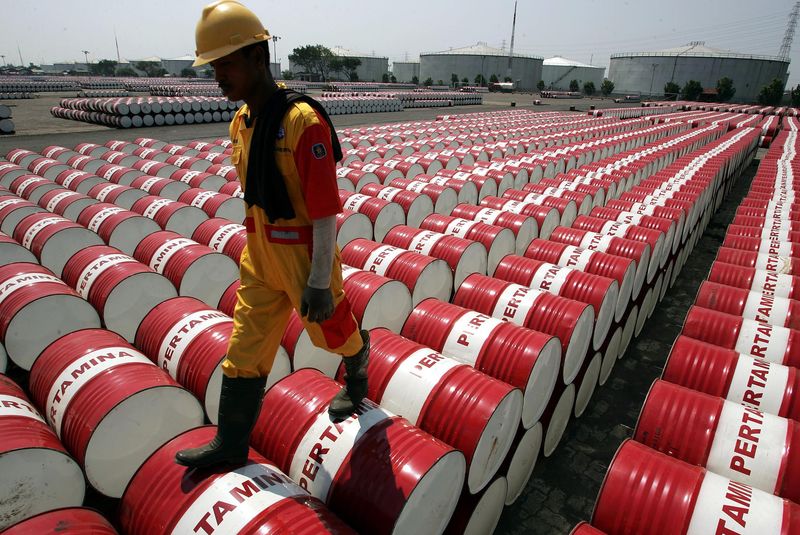By Ambar Warrick
Investing.com -- Oil prices fell below key levels on Tuesday and were nursing heavy losses from the past session as ructions in the U.S. banking sector brewed increased concerns over a potential economic crisis, with focus now turning to more cues from inflation data due later in the day.
Crude prices sank between $2 and $3 on Monday as markets feared a spillover from the collapse of Silicon Valley Bank (NASDAQ:SIVB) into the broader economy, even as the U.S. government intervened in the sector to limit any potential fallout.
But the collapse highlighted the growing economic cracks caused by high interest rates, and ramped up concerns over other banks facing a similar scenario. This fed into concerns that a potential recession could severely crimp oil demand this year.
Brent oil futures fell 1.1 % to $79.87 a barrel, while West Texas Intermediate futures fell 1.1% to $73.95 a barrel by 00:48 ET (04:48 GMT). Both contracts had slumped to two-month lows on Monday, before paring some losses.
Crude markets saw increased volatility as markets weighed a potential economic crisis against the prospect of the Federal Reserve softening its hawkish rhetoric to prevent further damage.
The dollar retreated on this notion, offering some relief to crude, as markets began pricing in a less severe rate hike by the Fed during its March meeting.
But the greenback recovered a measure of recent losses on Tuesday.
Focus is now squarely on U.S. consumer price index (CPI) data for February, due later in the day. Any signs that inflation remained sticky through the month give the Fed more impetus to hike rates, although it remains unclear how the central bank will further tighten policy in the face of more economic weakness.
Fed Fund futures prices show that markets have entirely ruled out the possibility of a 50 basis point hike by the Fed when it meets next week, with a majority of traders pricing in a 25 bps hike.
A minority of traders expect the Fed to stand pat on rates.
Rising interest rates rattled oil markets through 2022, and have kept prices depressed so far in 2023. But the growing potential for a recession this year has added to recent pressure on crude prices.
Weaker-than-expected Chinese economic data also dulled some expectations that a recovery in the country will drive oil demand to record highs this year.
